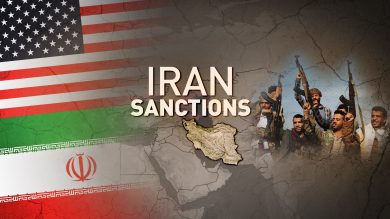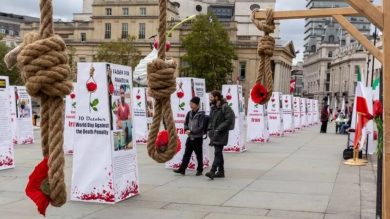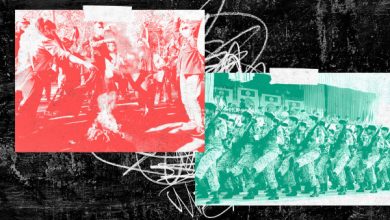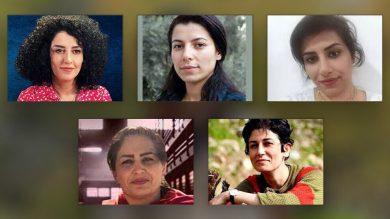In Iran, women who dare to challenge oppression face brutal consequences. The Islamic Revolutionary Guard Corps (IRGC) has turned prisons into centers of fear and control, where activists, journalists, and ordinary citizens are subjected to torture, abuse, and psychological warfare. Yet, even behind bars, Iranian women remain unbreakable, turning prison cells into symbols of resistance and defiance.
The world needs to hear their stories—of bravery, suffering, and resilience. These women are not just prisoners; they are leaders in Iran’s ongoing fight for justice, dignity, and democracy. This article delves into:
• The IRGC’s role in imprisoning women who demand freedom.
• Conditions inside Iran’s prisons and the tactics used to break prisoners.
• Stories of courageous women who have suffered, yet continue to resist.
• How the international community can help free them.
1. The IRGC’s Role in Targeting Women Activists
A. Criminalizing Dissent
In the Islamic Republic of Iran, simply demanding basic freedoms can lead to arrest and imprisonment. Women are charged with vague offenses such as:
• “Propaganda against the state” – for speaking out against oppression.
• “Acting against national security” – for removing the compulsory hijab.
• “Spreading corruption on earth” – for organizing peaceful protests.
These fabricated charges serve as tools for silencing dissent and instilling fear in Iranian society.
B. The IRGC’s Role in Mass Arrests
The IRGC’s Intelligence Unit is responsible for:
• Surveilling activists online and tracking their social media activities.
• Raiding homes and workplaces without legal justification.
• Conducting forced disappearances, where families have no information about detainees.
Since the “Women, Life, Freedom” protests began in 2022, thousands of women have been detained, many sent to notorious prisons like Evin and Qarchak, where brutal interrogations and torture are routine.
2. Life Inside Iran’s Prisons: A System of Fear and Torture
A. Evin Prison: Iran’s Most Feared Detention Center
Evin Prison, located in Tehran, has become a symbol of political repression. Under IRGC control, it is infamous for:
• Torture and forced confessions – women are beaten, electrocuted, and deprived of sleep.
• Psychological abuse – threats against their families and children are common.
• Rape and sexual violence – used as a weapon to humiliate and silence female prisoners.
• Solitary confinement – locking women in windowless cells for months, driving them to mental collapse.
Despite this, many Iranian women emerge stronger, refusing to be broken by the regime’s cruelty.
B. Qarchak Prison: A Living Nightmare for Women
Qarchak Prison, often called “Iran’s worst women’s prison,” is located in Varamin, south of Tehran. Women detained here face:
• Severe overcrowding, with cells holding more than double their capacity.
• Lack of medical care, leading to disease, malnutrition, and suffering.
• Intentional mixing of political prisoners with violent criminals, increasing the risk of assault.
• Torture and sexual harassment by prison guards loyal to the IRGC.
Many women develop serious health conditions due to neglect, lack of hygiene, and abuse, yet the IRGC denies them medical treatment as a form of punishment.
C. Tactics Used to Break Women Prisoners
The IRGC’s goal is not just to imprison women—but to destroy their spirit. Common tactics include:
• Sexual abuse and forced confessions, aired on state television to discredit activists.
• Denying family visits, leaving women isolated and psychologically vulnerable.
• Forcing women to sign documents pledging loyalty to the regime in exchange for release.
• Placing activists in cells with violent criminals, increasing their risk of attack.
Despite these horrors, many women refuse to be silenced, turning their suffering into a weapon against oppression.
3. Stories of Courage: Women Who Refuse to Be Silenced
A. Narges Mohammadi: The Nobel Peace Prize Laureate
Narges Mohammadi, a renowned human rights activist, has been repeatedly imprisoned for:
• Campaigning against the death penalty in Iran.
• Documenting human rights violations inside Iranian prisons.
• Refusing to remain silent, even under extreme torture and solitary confinement.
In 2023, she was awarded the Nobel Peace Prize, proving that prison walls cannot silence the truth.
B. Sepideh Gholian: Defying the IRGC’s Fear Tactics
Sepideh Gholian, a journalist and labor rights activist, has faced:
• Multiple arrests for covering protests against government corruption.
• Torture, forced confessions, and constant surveillance after release.
• A re-arrest just hours after her freedom, showing the IRGC’s relentless persecution.
Despite everything, she continues to expose the regime, refusing to succumb to fear.
C. Nasrin Sotoudeh: The Lawyer Who Won’t Back Down
Nasrin Sotoudeh, a human rights lawyer, has spent years in prison for:
• Defending women arrested for removing their hijabs.
• Advocating for political prisoners and minority rights.
• Speaking out against the death penalty, despite threats from the IRGC.
Her courage has made her an international symbol of justice, proving that even behind bars, resistance thrives.
4. The Role of the International Community
A. Why Global Pressure Matters
The Iranian regime thrives on secrecy and impunity. The more the world exposes its crimes, the harder it becomes for the IRGC to continue its abuses.
To help, the international community must:
✔ Sanction the IRGC as a terrorist organization.
✔ Pressure Iran to release women prisoners immediately.
✔ Amplify the stories of imprisoned women in global media.
✔ Support secure communication tools for activists inside Iran.
B. How Ordinary People Can Help
Even individuals can make an impact by:
✔ Sharing information using #FreeIranianWomen and #WomenLifeFreedom.
✔ Pressuring governments and human rights organizations to take action.
✔ Supporting exiled Iranian activists, ensuring their voices reach global audiences.
The IRGC’s prisons are meant to silence women—but global solidarity can amplify their voices.
Conclusion: Women Will Not Be Silenced
The stories of Iranian women in prison are not just about suffering—they are about unwavering courage. These women, despite torture and imprisonment, refuse to break or surrender.
From Narges Mohammadi to Sepideh Gholian, their resistance sends a powerful message:
“You can lock us up, but you cannot silence us.”
The world must not look away. The fight for Iranian women’s freedom is a fight for human rights everywhere.
Join Our Newsletter!
Stay informed with the latest updates, news, and ways to take action in the fight for justice and global security. Sign up now to get updates delivered straight to your inbox!





